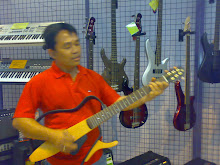Odessa, the port city at the Black Sea was our last out-of-town trip. In a few weeks, our 4-month training will end and Odessa seemed the perfect place for culmination. It was late June and summer made people go out and relish the sun after months of cold and snow. As expected, Odessa’s beaches were swarmed with people.
Perhaps the most memorable experience I had was when we watched a ballet show at the famed Odessa Ballet and Opera House. Russia was and perhaps still is tops in ballet and their Ballet and Opera Houses were just magnificent. We were seated at the exclusive balcony section at the side near the stage, a good full view of the whole opera house with those magnificent chandeliers hanging over. It was my first and so far the only time I have ever watched a ballet show performed by world renowned ballet dancers. Weeks later, in Moscow, while in transit waiting for our flight back home, we visited the ultimate ballet house, the Bolshoi Theatre, but unfortunately we were not able to watch a show. It was then closed for maintenance.
Another memorable experience we had was our attempt to dip and bathe in the Black Sea. The sun has been up for weeks, and daily, multitudes of people of all ages and shapes, swarmed the beaches, enjoying summer. But as we jumped to the waters, suddenly we froze. The Black Sea waters was still freezing cold- to us. That abruptly ended our swimming adventure at the famous Black Sea.
One night too, while listening to a Russian band and drinking our usual Vodka, Cudra, our colleague from Mozambique, told me he thought he saw “your Philippine countryman “ at the lobby. I disagreed and told him “there are no Filipinos here for what will he be doing here in this faraway land?”. For almost 4 months, we haven’t had encountered any Filipino nor had we heard any news about our country. A little while later, I went to the comfort room. And just as I was fixing my hair in front of a mirror, 2 guys of my size and color came in. They didn’t look at me but instead passed by where I stood and in a voice loud enough for me to hear, uttered the sweetest word I haven’t heard in a long while- KABAYAN. It was their way of testing whether a stranger is a Filipino or not. How happy and glad I was to meet them; one was from Ozamis and the other from Cebu. They were Filipino seamen and their ship was docked at Odessa port to unload and backload cargos. Later, when I returned to the bar, I told my Mozambique friend about it. His reply: I told you so!


































